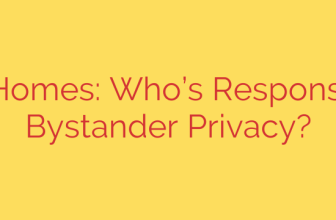
EDR vs. XDR: Which Cybersecurity Solution is Right for Your Business?
In today’s rapidly evolving threat landscape, traditional security measures like antivirus software are no longer sufficient. Cyber threats have become more sophisticated, capable of bypassing basic defenses and hiding within complex IT environments. To combat these advanced threats, organizations are turning to more powerful solutions: Endpoint Detection and Response (EDR) and Extended Detection and Response (XDR).
While they sound similar, EDR and XDR serve distinct purposes and offer different levels of protection. Understanding the difference is crucial for making the right investment to secure your organization’s critical assets. This guide will break down what each solution does, highlight their key differences, and help you decide which is the right fit for your business.
What is Endpoint Detection and Response (EDR)?
Let’s start with the foundation: Endpoint Detection and Response (EDR). As the name suggests, EDR solutions are focused exclusively on protecting your company’s endpoints. An endpoint is any device that connects to your network, such as laptops, desktops, servers, and mobile devices. These devices are often the primary targets for attackers trying to gain a foothold in your network.
An EDR platform works by continuously monitoring these endpoints, collecting vast amounts of data on processes, connections, and user activity. It then uses behavioral analysis and machine learning to identify suspicious activities that could signal a cyberattack.
Key functions of an EDR solution include:
- Continuous Monitoring and Data Collection: It acts like a security camera for your endpoints, recording everything that happens.
- Real-Time Threat Detection: By analyzing behavior, it can spot potential threats that traditional signature-based antivirus would miss, such as fileless malware or malicious scripts.
- Automated Response: When a threat is detected, EDR can automatically take action, such as isolating an infected endpoint from the network to prevent the threat from spreading.
- Incident Investigation Tools: It provides security analysts with the data and tools they need to perform deep-dive investigations, understand the full scope of an attack, and hunt for hidden threats.
EDR is a powerful and essential layer of modern cybersecurity. However, its vision is limited to the endpoint itself. It can tell you in great detail what happened on a specific laptop, but it can’t see how an attacker moved through your network or compromised a cloud service to get there.
What is Extended Detection and Response (XDR)?
This is where Extended Detection and Response (XDR) enters the picture. Think of XDR as the next evolution of EDR. The “X” stands for “Extended,” signifying its ability to see beyond individual endpoints and provide a holistic view of your entire IT ecosystem.
XDR platforms do everything an EDR does, but they also integrate and correlate data from a much wider range of security layers. Instead of just looking at endpoints, XDR pulls in telemetry from sources like:
- Network traffic
- Cloud workloads (AWS, Azure, GCP)
- Email security gateways
- Identity and access management systems
- Firewalls
By collecting and analyzing data from all these different sources, XDR connects the dots between seemingly unrelated security alerts. An alert from an email gateway, suspicious network traffic, and unusual activity on a server might be treated as three separate, low-priority issues by different tools. XDR correlates these events into a single, high-fidelity incident, showing the complete story of the attack from initial entry to final objective.
The core advantages of XDR are:
- Superior Visibility: It breaks down security silos, giving you a comprehensive view of threats across your entire attack surface.
- Higher-Quality Alerts: By correlating data, XDR reduces the number of false positives and consolidates thousands of low-level alerts into a handful of actionable incidents, combating “alert fatigue” for your security team.
- Faster and More Effective Response: With a complete picture of an attack, security teams can respond more quickly and effectively, taking coordinated actions across networks, cloud, and endpoints simultaneously.
Key Differences: EDR vs. XDR at a Glance
| Feature | Endpoint Detection and Response (EDR) | Extended Detection and Response (XDR) |
| :— | :— | :— |
| Primary Focus | Securing individual endpoints (laptops, servers). | Securing the entire IT environment. |
| Data Sources | Endpoint agents only. | Multiple sources: endpoints, network, cloud, email, etc. |
| Scope of Visibility | Deep visibility into device-level activity. | Holistic, cross-domain visibility of the entire attack chain. |
| Alerts | Can generate a high volume of alerts from a single source. | Correlates alerts from multiple sources into single, prioritized incidents. |
| Response Actions | Actions are limited to the endpoint (e.g., isolating a device). | Enables coordinated response across multiple domains (e.g., blocking an IP address at the firewall and quarantining a device). |
How to Choose the Right Solution for Your Company
The choice between EDR and XDR depends heavily on your organization’s size, complexity, and security maturity. Here are some key questions to ask:
What is your current security maturity?
- If your organization is just beginning to build its security program beyond basic antivirus, EDR is an excellent and necessary first step. It provides a massive upgrade in endpoint protection and visibility.
- If you already have a mature security team (like a Security Operations Center or SOC) that is struggling to manage alerts from multiple, disconnected tools, XDR can provide the integration and automation needed to streamline operations.
How complex is your IT environment?
- A small business with a straightforward, on-premise network may find that a robust EDR solution provides sufficient protection.
- A larger enterprise with a hybrid environment of on-premise servers, multiple cloud platforms, and a remote workforce will gain significantly more value from the cross-domain visibility that XDR offers.
What are your team’s resources?
- EDR solutions require skilled analysts to investigate alerts and manage the platform.
- XDR aims to reduce the manual workload on analysts by automating the correlation of data. For teams stretched thin, XDR can act as a force multiplier, allowing them to detect and respond to threats more efficiently.
The Bottom Line: An Evolution, Not a Replacement
Ultimately, the EDR vs. XDR debate isn’t about one being “better” than the other. Rather, XDR represents a natural evolution of the security paradigm, built upon the foundational capabilities of EDR. A strong EDR is the core of any good XDR platform.
For most organizations, the journey to advanced threat detection starts with implementing a powerful EDR solution. As your company grows and your IT environment becomes more complex, transitioning to an XDR platform is the logical next step to ensure comprehensive protection against the sophisticated cyber threats of today and tomorrow.
Source: https://www.kaspersky.com/blog/is-it-time-for-xdr/54433/








